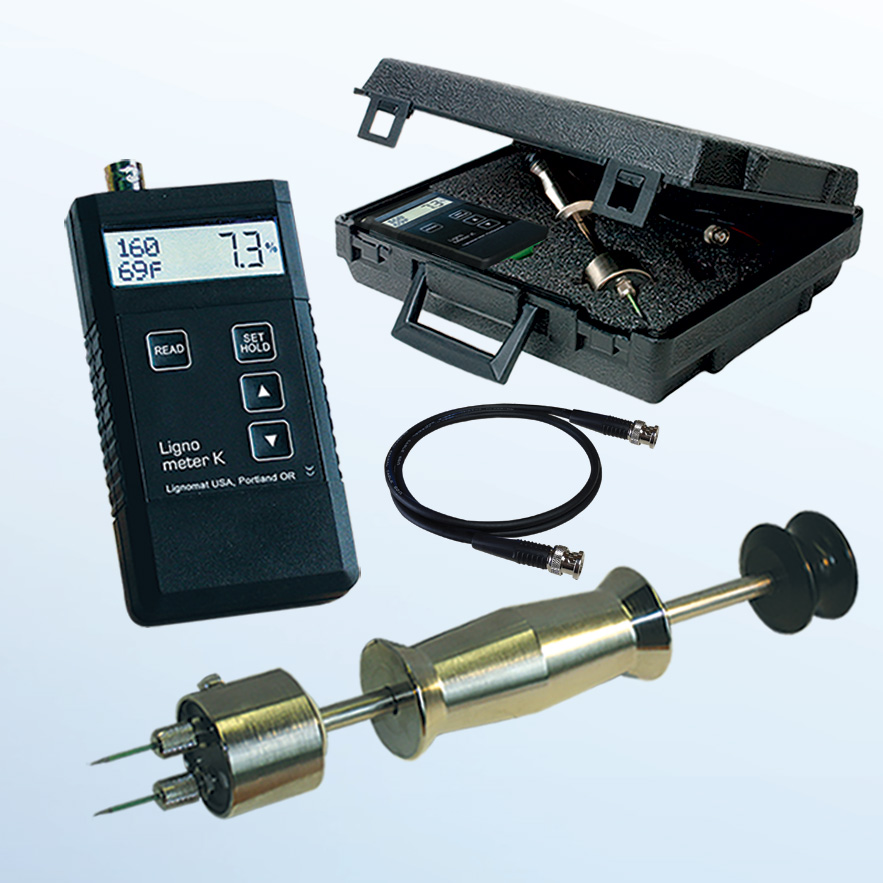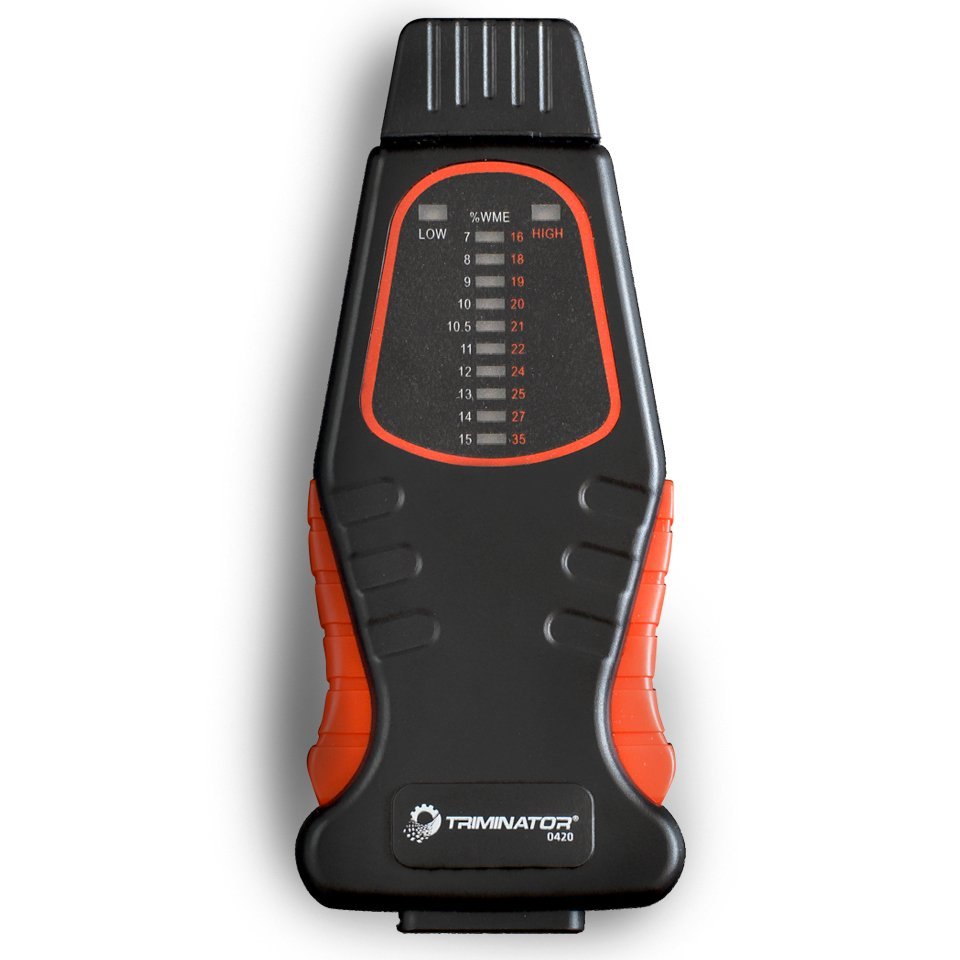Moisture Meter Buying Guide: What to Look for in High-Quality Instruments
Wiki Article
Delve Into the World of Moisture Meters: Whatever You Need to Know
In the world of moisture meters lies a globe of accuracy and practicality that frequently goes unnoticed. These devices, while seemingly simple, hold a wealth of info that can significantly influence different industries and applications. Understanding just how moisture meters operate, the various types offered, and their varied usages can shed light on their value in ensuring high quality and performance. By discovering the details of moisture meters, one can reveal an important device that goes beyond mere measurement, offering understandings that can make a considerable distinction in countless areas.Exactly How Dampness Meters Job
Dampness meters run by measuring the electric conductivity or capacitance of products to establish the moisture material existing - Moisture Meter. These meters are very useful tools throughout numerous markets, consisting of woodworking, agriculture, and building and construction. By using different approaches such as pinless or pin-type innovation, dampness meters supply precise analyses that assist specialists make informed decisionsPin-type dampness meters work by putting the sharp pins right into the product being checked. The electric conductivity between the pins is then determined, with greater moisture degrees resulting in enhanced conductivity. On the various other hand, pinless dampness meters use electro-magnetic signals to scan a larger location without triggering any kind of damage to the product's surface area. These meters are ideal for rapidly analyzing dampness levels in big locations or finished items.
No matter the technique used, wetness meters play a crucial role in protecting against concerns such as mold and mildew development, structural damage, or product issues brought on by excess dampness. Understanding exactly how these meters work is necessary for making certain the top quality and integrity of materials in various applications.
Sorts Of Dampness Meters
Given the essential role wetness meters play in various markets, it is important to comprehend the different types available to experts for properly examining wetness degrees. There are mostly two primary kinds of moisture meters: pinless and pin-type dampness meters.
Pin-type dampness meters make use of two pins that are put right into the material being checked to gauge the electric resistance between them. This approach is generally made use of for wood, drywall, and various other building materials. Pin-type meters provide precise readings at details midsts, making them suitable for identifying dampness slopes.
On the various other hand, pinless wetness meters utilize electro-magnetic sensor plates to check a bigger location of the material without creating any type of damage. This type appropriates for rapidly scanning big areas and is commonly utilized for floor covering, wall surfaces, and ceilings. Pinless meters are convenient for taking analyses on finished surfaces without leaving any noticeable marks.
Both sorts of dampness meters have their advantages and are picked based upon redirected here the particular needs of the work available. Comprehending the differences between these types is essential for professionals to make exact wetness analyses.
Applications Across Industries
Building experts depend on wetness meters to analyze the wetness levels in structure materials like drywall, wood, and concrete, which is crucial for maintaining structural honesty and preventing concerns like rot or mold. The floor covering industry utilizes wetness meters to measure the dampness content in subfloors before mounting numerous flooring treatments, stopping expensive damages due to excess wetness. In the food sector, wetness meters are used to keep track of and manage moisture levels in items such as grains, nuts, and dried fruits to preserve freshness and quality.Tips for Making Use Of Moisture Meters
Use the moisture meter's calibration setups to ensure accurate readings when gauging the moisture material in numerous products. Furthermore, make certain the meter is established to the proper wetness variety for the material you are gauging to obtain the most exact outcomes.
When using a pin-type moisture meter, insert the pins to the proper deepness advised for the material being tested. This makes sure that the moisture analyses are extracted from the right deepness within the material, offering a more exact representation of its dampness material. For pinless dampness meters, bear in mind to maintain appropriate call with the material's surface area to obtain trusted analyses.

On a regular basis examine and replace the batteries in your moisture meter to avoid incorrect analyses because of low power. Shop the meter in a secure and dry area when not being used to extend its lifespan and maintain its precision. By adhering to these ideas, you can maximize the performance of your dampness meter and obtain accurate moisture content measurements throughout various products.

Maintenance and Calibration
To make certain the accuracy of dampness material measurements, normal upkeep and calibration of the wetness meter are necessary steps in its appropriate performance. Calibration readjusts the moisture meter to guarantee that it supplies reliable and consistent results.Calibration must be done regularly, especially if the wetness meter is made Read Full Report use of regularly or in critical applications where specific measurements are called for. Numerous moisture meters include calibration devices or can be calibrated by professional solutions - Moisture Meter. It is recommended to keep a log of calibration days and results to track the performance of the moisture meter over time. By keeping and adjusting the wetness meter on a regular basis, users can rely on the accuracy of the moisture material measurements gotten.
Verdict
Finally, wetness meters play an essential duty in numerous markets by properly gauging the wetness material of materials. Comprehending exactly how these devices function, the different kinds offered, and correct maintenance and calibration are crucial for getting reliable outcomes. Whether in building and construction, production, or farming, the use of wetness meters assists make certain quality assurance and effectiveness in processes.Building professionals rely on wetness meters to analyze the moisture degrees in structure products like concrete, drywall, and wood, which is essential for maintaining architectural honesty and protecting against issues like rot or mold and mildew. The floor covering market uses moisture meters to measure the moisture material in subfloors before installing different flooring treatments, avoiding expensive problems due to excess moisture.Use the dampness meter's calibration settings to make certain exact analyses when determining the wetness material in different products. By complying with these ideas, you can maximize the performance of your moisture meter and obtain exact moisture web content go to website dimensions throughout different products.
In conclusion, wetness meters play a vital role in numerous markets by precisely measuring the wetness content of products.
Report this wiki page